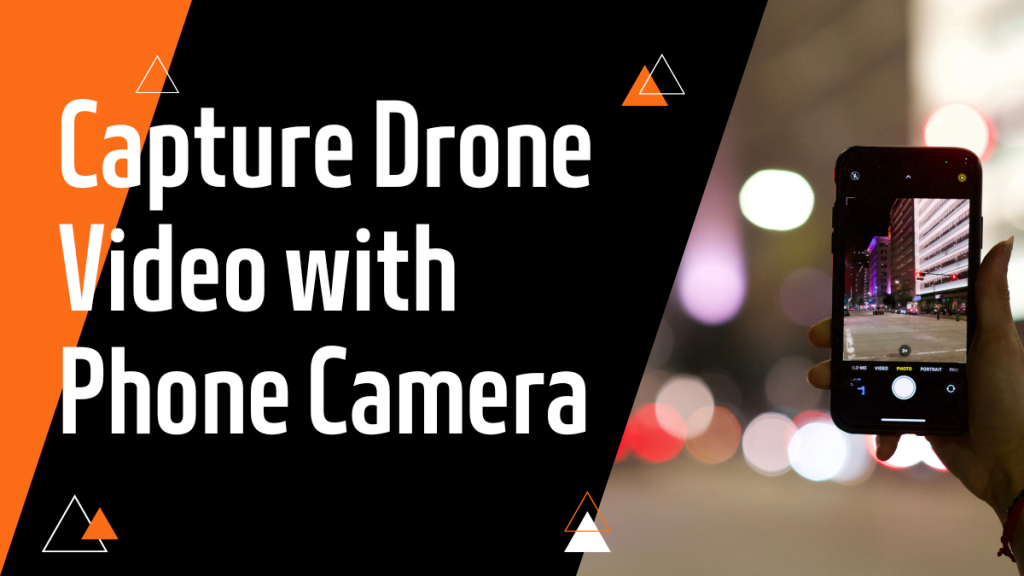In recent years, the use of drones has skyrocketed, and so has the demand for breathtaking aerial videos. However, not everyone can afford a professional drone. The good news is that you can still capture stunning drone footage using just your smartphone camera. In this article, we will walk you through the process of capturing high-quality drone video with your phone camera, turning ordinary moments into extraordinary cinematic experiences.
let’s delve deeper into some essential techniques and additional tips to help you create stunning and captivating aerial footage:
1. Use Manual Camera Settings
Most smartphone camera apps offer manual settings for exposure, focus, and white balance. Utilizing these settings allows you to have more control over the final look of your video. Adjusting exposure can help balance the lighting, while manual focus ensures that your subject remains sharp throughout the shot.
2. Take Advantage of Slow Motion
Many modern smartphones have the option to record in slow motion. This feature can add a dramatic and cinematic effect to your drone video. Slow-motion shots work particularly well for capturing dynamic movements like waves crashing, people running, or animals in action.
3. Time-Lapse Sequences
Time-lapse videos create a mesmerizing visual experience, compressing long periods into short clips. Set your smartphone camera to capture images at intervals while it remains stable on the mount. Later, these images can be compiled into a time-lapse video during post-processing.
4. Incorporate Panoramic Shots
Drone video with a phone camera doesn’t have to be limited to standard horizontal footage. Experiment with panoramic shots to capture the breadth and beauty of landscapes. Slowly pan your smartphone camera from left to right or vice versa to capture breathtaking views.
5. Introduce Camera Movement
If your smartphone mount allows for smooth movement, consider adding subtle camera movements during the recording. A slow and controlled pan or tilt can add a cinematic touch and enhance the viewer’s engagement with the footage.
6. Utilize ND Filters
Neutral Density (ND) filters are essential tools for controlling light exposure in bright conditions. When shooting outdoors on a sunny day, using an ND filter will prevent overexposed and washed-out footage, allowing you to maintain the right balance of light and color.
7. Plan and Storyboard Your Shots
Before heading out to shoot, plan your shots and create a storyboard. Knowing in advance what kind of shots you want to capture will save time on location and ensure you don’t miss any critical moments.
8. Avoid Excessive Camera Movements
While camera movements can add interest to your footage, excessive and jerky movements can be disorienting for viewers. Keep your movements smooth and controlled to maintain a professional look.
9. Capture Unique Perspectives
One of the advantages of drone-like smartphone footage is the ability to get close to subjects that traditional drones may struggle with. Use this opportunity to capture unique and intimate perspectives, such as close-ups of wildlife or architectural details.
10. Enhance Audio Quality
A captivating drone video isn’t just about the visuals. Consider using external microphones or smartphone accessories to improve the audio quality. High-quality audio can significantly enhance the overall viewing experience.
11. Tell a Story
Great drone videos tell a story. Think about the narrative you want to convey through your footage and ensure that each shot contributes to that storytelling. A compelling story will keep viewers engaged from start to finish.
12. Avoid No-Fly Zones
Just like with traditional drones, certain areas may be designated as no-fly zones for any aerial equipment. Respect these areas and choose locations where you can fly your smartphone safely and legally.
13. Calibrate Your Smartphone’s Sensors
Before recording, calibrate your smartphone’s sensors to ensure accurate readings during flight. Proper calibration enhances stability and responsiveness during recording.
14. Use Post-Processing Effects Sparingly
While post-processing can enhance your video, avoid overusing filters and effects that may distract from the natural beauty of your footage. Subtle adjustments are often more effective.
15. Share Your Experience
Lastly, share your experience of capturing drone-like footage with your smartphone. Engage with your audience by explaining your techniques, challenges, and the beauty you discovered while filming.
In conclusion, capturing drone video with a phone camera is an exciting and accessible way to create breathtaking aerial footage. By combining technical skills with creativity, you can produce videos that mesmerize and engage your audience. Embrace the freedom of smartphone-mounted “droning” and let your imagination soar! So, grab your smartphone, follow these tips, and start creating your own awe-inspiring aerial masterpieces.
FAQs
- Can I use a drone instead of a smartphone to capture aerial video? Yes, you can use a traditional drone, but using a smartphone with a stabilizing mount offers a cost-effective alternative.
- What are the advantages of using a smartphone for aerial video? Smartphones are portable, readily available, and often have high-quality cameras, making them an excellent option for capturing aerial footage.
- Do I need an internet connection to capture drone video with my phone? No, an internet connection is not required for capturing drone video. However, it may be needed if you plan to live-stream or upload the footage online.
- Can I use the phone’s built-in editing software for post-processing? Yes, many smartphones have built-in video editing software, but for more advanced editing, consider using third-party video editing apps.
- What are some popular platforms to share drone-like videos? You can share your videos on social media platforms like Instagram, Facebook, YouTube, and Vimeo to reach a broader audience.

